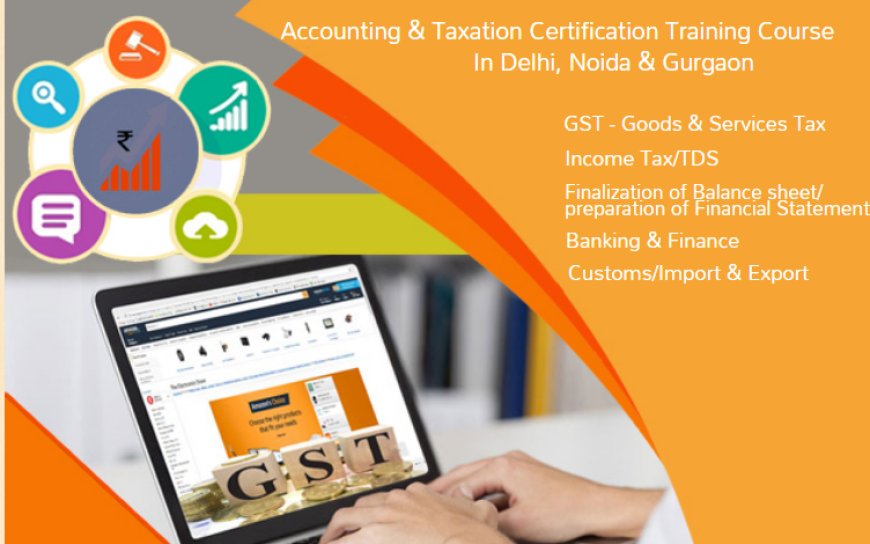How to Reconcile GSTR-1 and GSTR-3B for Accurate Tax Filing, Get Practical GST Course in Delhi, 110097, by SLA Consultants India, New Delhi

Reconciliation of GSTR-1 and GSTR-3B for Accurate Tax Filing: A Practical GST Course in Delhi by SLA Consultants India
Reconciliation between GSTR-1 and GSTR-3B is a critical step for businesses to ensure the accuracy and compliance of their Goods and Services Tax (GST) returns. Both forms serve different purposes, but together they provide a comprehensive picture of a business’s tax liabilities and the input tax credits (ITC) it can claim. To avoid discrepancies and potential penalties, it’s essential to understand how to reconcile these returns properly.
Understanding GSTR-1 and GSTR-3B
-
GSTR-1: This is the return filed by businesses to report details of outward supplies or sales. It includes information about the sales invoices, debit/credit notes, and other outward transactions. GSTR-1 is filed monthly or quarterly, depending on the business’s turnover.
-
GSTR-3B: This is a summary return used to report the overall tax liabilities for a given period. It includes details of the outward supplies from GSTR-1, but also covers other taxes like the input tax credit (ITC), and is used to calculate the final net tax payable. GSTR-3B needs to be filed monthly, irrespective of the business turnover.
Steps to Reconcile GSTR-1 and GSTR-3B
-
Match Outward Supplies: The first step in reconciliation is to compare the details of outward supplies declared in GSTR-1 with those in GSTR-3B. Both should reflect the same sales data, including the tax amounts. Any discrepancies in the amounts reported can lead to penalties, so it’s essential to ensure that the sales figure matches exactly in both returns.
-
Verify Input Tax Credit (ITC): The ITC declared in GSTR-3B should correspond with the ITC available in GSTR-2A (which automatically gets populated from GSTR-1 filed by suppliers). Check if the ITC claimed in GSTR-3B is supported by valid invoices and reflected in GSTR-2A. Any mismatched or excess ITC claimed in GSTR-3B could lead to issues during GST assessments.
-
Ensure Proper Tax Calculation: Double-check the calculation of tax liabilities in both GSTR-1 and GSTR-3B. Make sure the tax payable in GSTR-3B matches the cumulative tax liabilities declared in GSTR-1. This includes both the CGST and SGST/IGST components.
-
Reconcile the Data Periodically: It’s important to perform periodic reconciliation, either monthly or quarterly, to ensure there are no gaps or errors. Reconciliation should be done before the deadline for filing GSTR-3B to avoid late filing and penalties.
-
Correct Errors: If any errors or discrepancies are found during the reconciliation process, such as a mismatch in sales figures or ITC, businesses should correct the errors by amending their GSTR-1 or GSTR-3B returns, depending on where the mistake occurred.
Why Reconciliation Matters
Reconciliation between GSTR-1 and GSTR-3B is essential for ensuring that the data reported in both forms are accurate, preventing tax discrepancies, and avoiding potential penalties or interest charges. Failure to reconcile these forms can lead to incorrect tax filings, which may trigger audits or assessments by tax authorities.
Practical GST Course in Delhi by SLA Consultants India
SLA Consultants India, based in New Delhi (PIN: 110097), offers a comprehensive Practical GST Course in Delhi for professionals and business owners who want to gain a clear understanding of GST returns, including the reconciliation process between GSTR-1 and GSTR-3B. The course provides real-life scenarios and practical tips to help participants file GST returns accurately and avoid compliance issues.
In this course, participants will learn how to handle various aspects of GST compliance, including GSTR-1, GSTR-3B, and reconciliation techniques. It will also cover issues like handling discrepancies, claiming proper ITC, and addressing mismatches to ensure the correct filing of returns.
By enrolling in this course, professionals can gain the skills necessary to ensure accurate GST filings and stay compliant with current tax regulations.
SLA Consultants How to Reconcile GSTR-1 and GSTR-3B for Accurate Tax Filing, Get Practical GST Course in Delhi, 110097, by SLA Consultants India, New Delhi Details with "New Year Offer 2025" are available at the link below:
https://www.slaconsultantsindia.com/certification-course-gst-training-institute.aspx
https://slaconsultantsdelhi.in/gst-course-training-institute/
GST Training Courses
Module 1 - GST- Goods and Services Tax- By Chartered Accountant- (Indirect Tax)
Module 2 - Income Tax/TDS - By Chartered Accountant (Direct Tax)
Module 4 - Banking and Finance Instruments - By Chartered Accountant
Module 5 - Customs / Import and Export Procedures - By Chartered Accountant
Contact Us:
SLA Consultants India
82-83, 3rd Floor, Vijay Block,
Above Titan Eye Shop,
Metro Pillar No.52,
Laxmi Nagar, New Delhi - 110092
Call +91- 8700575874
E-Mail: hr@slaconsultantsindia.com
Website: https://www.slaconsultantsindia.com/


 slatraining
slatraining 







